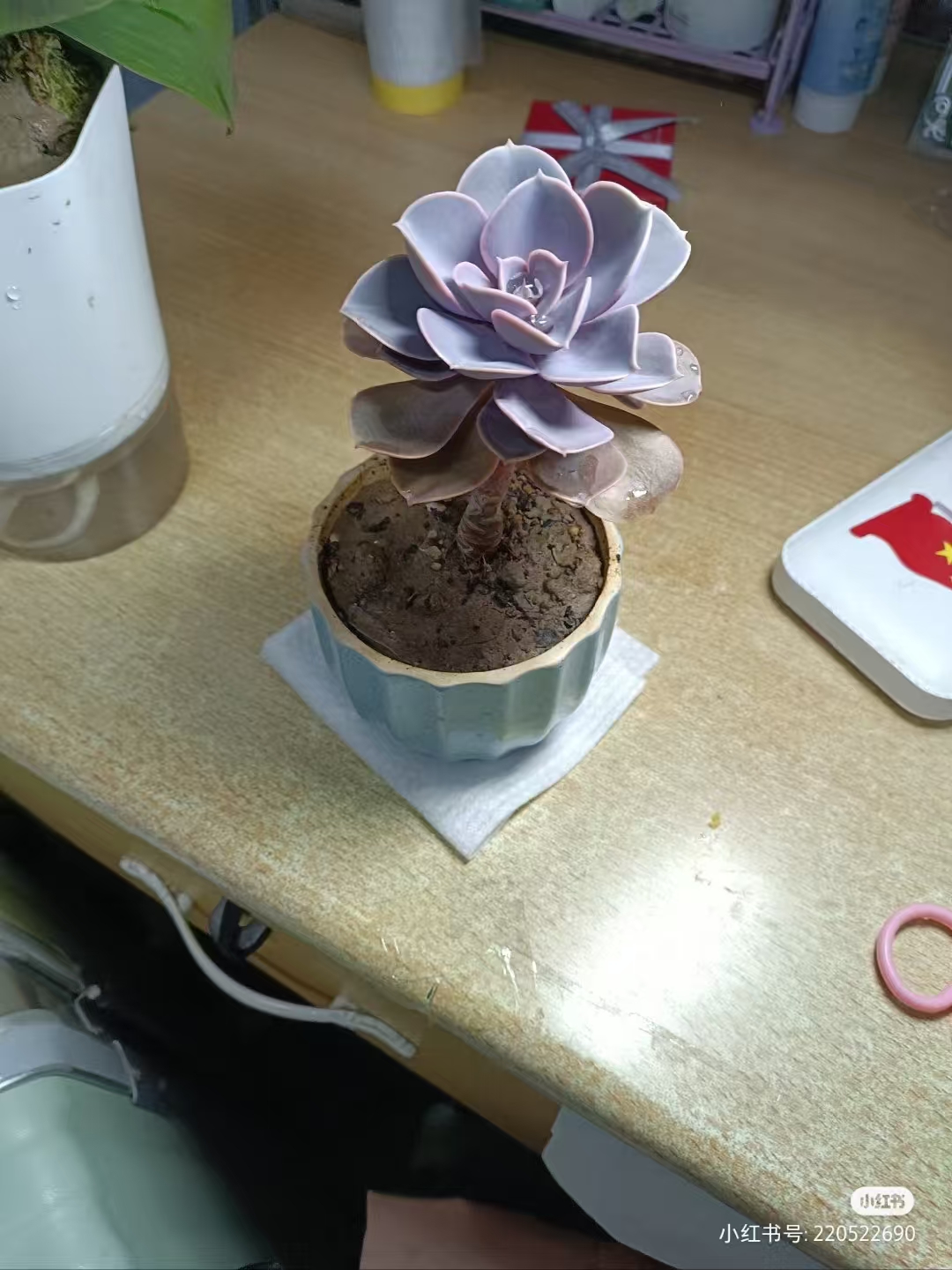Many plant enthusiasts who cultivate Echeveria 'Perle von Nurnberg' are concerned about its potential size. The growth scale of this succulent is actually influenced by multiple factors, such as the suitability of the growing environment, the correctness of daily care, and the length of growth period, all of which can cause differences in plant size.
Under natural growth conditions, the spread of a single Echeveria 'Perle von Nurnberg' plant generally ranges from 10 to 20 centimeters. However, this is just a common range. If it is particularly well-cared for—such as providing sufficient sunlight, loose and breathable soil, and reasonable water and fertilizer management—its spread may exceed this range. In terms of growth period, newly purchased seedlings are relatively small, and the plant will gradually grow larger over time. Typically, after 1-2 years of cultivation, the spread of Echeveria 'Perle von Nurnberg' can exceed 10 centimeters. After growing for more than 3 years, it is likely to form an old stem (old woody stem), with a thickened stalk and the potential to sprout many lateral buds, growing into a clump. The entire plant will then appear fuller and more spectacular.
It is particularly important to mention the impact of the growing environment. When Echeveria 'Perle von Nurnberg' grows in an environment with sufficient sunlight and a large temperature difference between day and night, it will grow compactly, with thick and plump leaves and a standard plant shape, making it highly ornamental. However, if it is kept in a low-light, dark place for a long time, the plant is prone to etiolation. During etiolation, the stem elongates, the space between leaves increases, the plant shape becomes loose, and the leaves thin. This "growth" is not a healthy state. Although the spread may appear larger, the plant looks messy, and its ornamental value is greatly reduced.
It should be noted that Echeveria 'Perle von Nurnberg' is a variety prone to etiolation. Etiolation is mainly characterized by excessive stem elongation, increased leaf spacing, loss of compactness, and the loss of the original beautiful shape. The main causes of etiolation are insufficient light and excessive watering.
Most succulents, including Echeveria 'Perle von Nurnberg', prefer ample sunlight. If it is kept in a dark corner indoors or a low-light balcony for a long time, the plant will desperately stretch its stem to grow upward in order to receive more sunlight, leading to etiolation. At the same time, if watering is too frequent and the soil is overly moist, the roots will absorb a large amount of water, prompting rapid plant growth. However, in low-light conditions, this growth becomes etiolation rather than making the leaves thick and plump.
To avoid etiolation of Echeveria 'Perle von Nurnberg', two key points should be noted in cultivation. First, ensure sufficient light, with at least 4-6 hours of direct sunlight per day. During the spring and autumn seasons when light conditions are good, it can be moved to a sunny outdoor location or balcony. Second, control watering by following the principle of "watering thoroughly after the soil is completely dry." Water only when the soil is completely dry, and do not keep the soil continuously moist, especially in low-light conditions, where watering frequency should be reduced to control the plant's growth rate.
If etiolation of Echeveria 'Perle von Nurnberg' is detected, there is no need to worry, as it can be treated according to the severity of the etiolation. For mild etiolation, simply increase light exposure and reduce watering. With careful care over time, the plant may regain its compact shape. For severe etiolation, a beheading method can be used: cut off the top of the etiolated stem to promote the germination of lateral buds and form new plants. Additionally, the base of the beheaded plant will grow new leaves, gradually shaping a beautiful plant form.
How big can Echeveria 'Perle von Nurnberg' grow?

Share with
Tagged in :




Leave a Reply